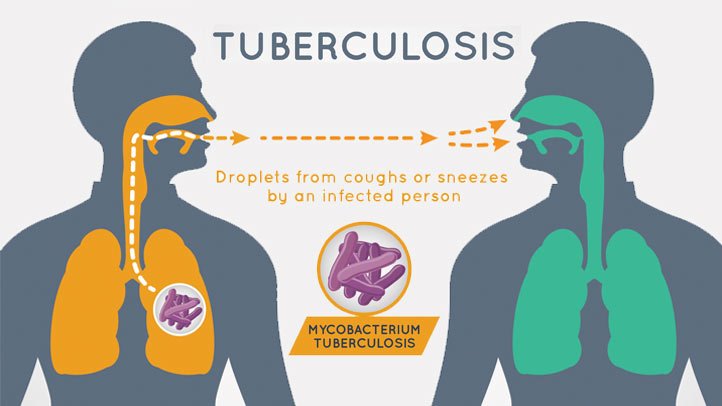 The purpose of World Tuberculosis Day, set for March 24th this year, is to help raise public awareness about all the consequences of this deadly disease. It has a major impact on social, economic, and health conditions in this country, and part of the reason for having this annual day is to encourage people in power to increase their efforts to control and eradicate tuberculosis. Senior home care professionals have often been confronted personally by the devastating effects which tuberculosis can have on some of their charges, in Oxford and elsewhere throughout the country. In this article, we’ll consider some of the major factors which make seniors vulnerable to contracting TB, and how those factors come about.
The purpose of World Tuberculosis Day, set for March 24th this year, is to help raise public awareness about all the consequences of this deadly disease. It has a major impact on social, economic, and health conditions in this country, and part of the reason for having this annual day is to encourage people in power to increase their efforts to control and eradicate tuberculosis. Senior home care professionals have often been confronted personally by the devastating effects which tuberculosis can have on some of their charges, in Oxford and elsewhere throughout the country. In this article, we’ll consider some of the major factors which make seniors vulnerable to contracting TB, and how those factors come about.
Chemotherapy
Chemotherapy is a form of treatment for some types of cancer, and one of the by-products of this treatment is that it weakens the immune system somewhat. When that happens, the body is less capable of fighting off the bacteria present in the air known as mycobacterium tuberculosis. These bacteria are virtually everywhere, and for the most part, they don’t harm anyone because people’s immune systems can successfully manage them so they don’t progress to the state of an infection.
However, when the immune system has been weakened significantly, the body is not as capable of resisting these bacteria, and they can take hold and attack body organs, primarily the lungs. Any senior individual who is being treated for cancer by using chemotherapy sessions may be at greater risk of developing TB, simply because their immune system is not strong enough to fight off the bacteria.
HIV infections
HIV infections are much like chemotherapy would be for a senior, because they can seriously weaken the immune system, and that will compromise the body’s ability to fight off mycobacterium tuberculosis bacteria present in the air. So in addition to whatever symptoms are present because of the HIV infection, it is much more likely that a senior could also develop tuberculosis. Many people have what is known as latent tuberculosis, which means they carry the bacteria inside them, but the bacteria are inactive and not considered harmful. The bacteria tend to remain inactive as long as the immune system can keep them at bay, but when the immune system becomes compromised, the latent bacteria may then become active, and infect the carrier.
Diabetes
Any senior person who has diabetes is at increased risk for also developing tuberculosis, primarily because diabetes can impact the immune system just as chemotherapy or HIV infections can. Without the full arsenal available in a healthy immune system, the bacteria which cause TB are much more likely to gain the upper hand in a person, and if someone is a latent carrier of mycobacterium tuberculosis bacteria, the bacteria can be activated by a gradually weakening immune system.
Kidney disease
Whenever someone has an advanced case of kidney disease, there is a definite possibility that their immune system will be compromised, partly by the ravages of the disease itself, and partly by the regimen of drugs that must be taken as a treatment for it. If the person is then exposed to someone who might be carrying the TB bacteria (and the carrier might be perfectly healthy), it becomes much more likely that they will develop a TB infection. The same is true if the person with kidney disease is a latent carrier of the TB bacteria – when weakened by treatment for the kidney disease, the immune system might become incapable of staving off the TB bacteria, and a full-blown infection will then occur.
Autoimmune disorders
Autoimmune disorders obviously also center around the immune system, but they can encourage an infection of tuberculosis in a slightly different way. Someone who is troubled by an autoimmune disorder will generally have their immune system attacking some part of the body by mistake, in other words, where no infection or other problem exists.
In order to lower the likelihood of these autoimmune attacks, a patient can be given drugs that act to suppress the activities of the immune system. For example, someone with Crohn’s Disease or rheumatoid arthritis might be administered these kinds of drugs so as to prevent mistaken attacks on various parts of the body.
However, when the immune system is suppressed in this way, it is unable to carry out its normal defense against legitimate attacks, such as from the tuberculosis bacteria. Whenever someone is at a high risk of developing an active tuberculosis infection, they may be prescribed a program of treatment which includes six to nine months of taking a drug called isoniazid.
While this drug may stave off a TB infection, it has the potential to cause serious damage to a person’s liver. That means for every case where someone may be at high risk for developing an active TB infection, there must be some serious consideration given to the tradeoff between the risk of infection and the possibility of contracting liver damage as a result of the isoniazid treatment.
